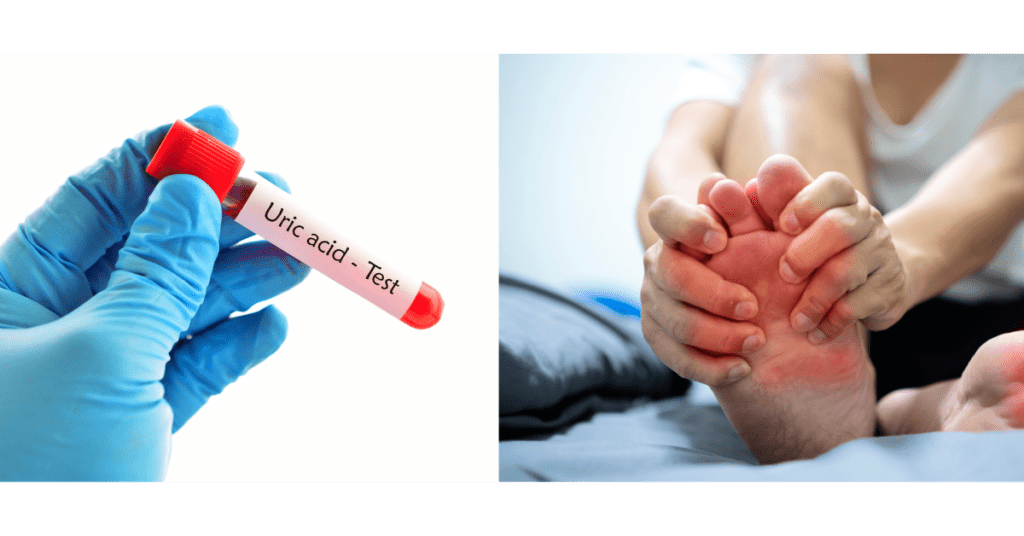FAQs
What are the symptoms of high uric acid in the body?
Typical symptoms of high uric acid include sudden agonizing pain in the joints, notably the big toe, edema, redness, and greater soreness. Other effects of high uric acid include kidney stones, tophus (hard deposits under the skin), and chronic joint pain. It causes painful sudden episodes and damages joints if untreated over a long period.
How to reduce uric acid in Ayurveda?
Ayurvedic treatment for high uric acid includes therapies such as Vamana, Virechana, and Rakta Mokshana along with internal medicines, dietary and lifestyle changes for comprehensive management.
How do I know if I have uric acid?
Diagnosis requires blood tests to measure the serum uric acid levels as a normal range being 3.5-7.2 mg/dL for men and 2.6-6.0 mg/dL for women. In addition, joint fluid may be analyzed to identify uric acid crystals. In contrast, the symptoms of high uric acid in body include severe joint pains and redness, sometimes swelling, and the condition could lead to some kidney problems.
What causes high uric acid levels in the body?
It is generally caused by excessive consumption of purine foods (red meat, organ meats, certain seafood), genetic factors related to uric acid breakdown, underlying diseases such as obesity, and kidney disease, and other factors of ingestion of medication or segmented cells. There are various reasons for increased uric acid in the body.
What is the best home remedy for uric acid?
The most effective home remedy for high uric acid includes the consumption of amla, ash guard, and bitter guard juice, avoiding red meat, to spicy, salty, sour food.
REFERENCES
Poona Nath Chouhan, Sapna Thakur. Management of hyperuricemia by ayurveda approach w.s.r. to gout. Int J Health Sci Res. 2023; 13(6): 225-228.
![]()
Dr. Faeem Ahamad, Dr. Khushboo, Dr. Rajveer Gupta, Dr. Harprasad Ahirwar. A Review on Vatarakta with special reference to PathyaApathya in Vatarakta. J Ayurveda Integr Med Sci 2020;2:219-221.
Jain, R, Tiwari, A (2024). Ayurveda and High Uric Acid. Matrix Science Pharma.
![]()
Chouhan, P N, Thakur, S (2023). Management of Hyperuricemia by Ayurveda Approach w.s.r. to Gout. International Journal of Health Sciences and Research.
![]()
Taju, K G et al. (2024). Role of Diet and Lifestyle in Prevention of Recurrent Gout Attacks. JOURNAL OF HEALTHCARE SCIENCES.
![]()


